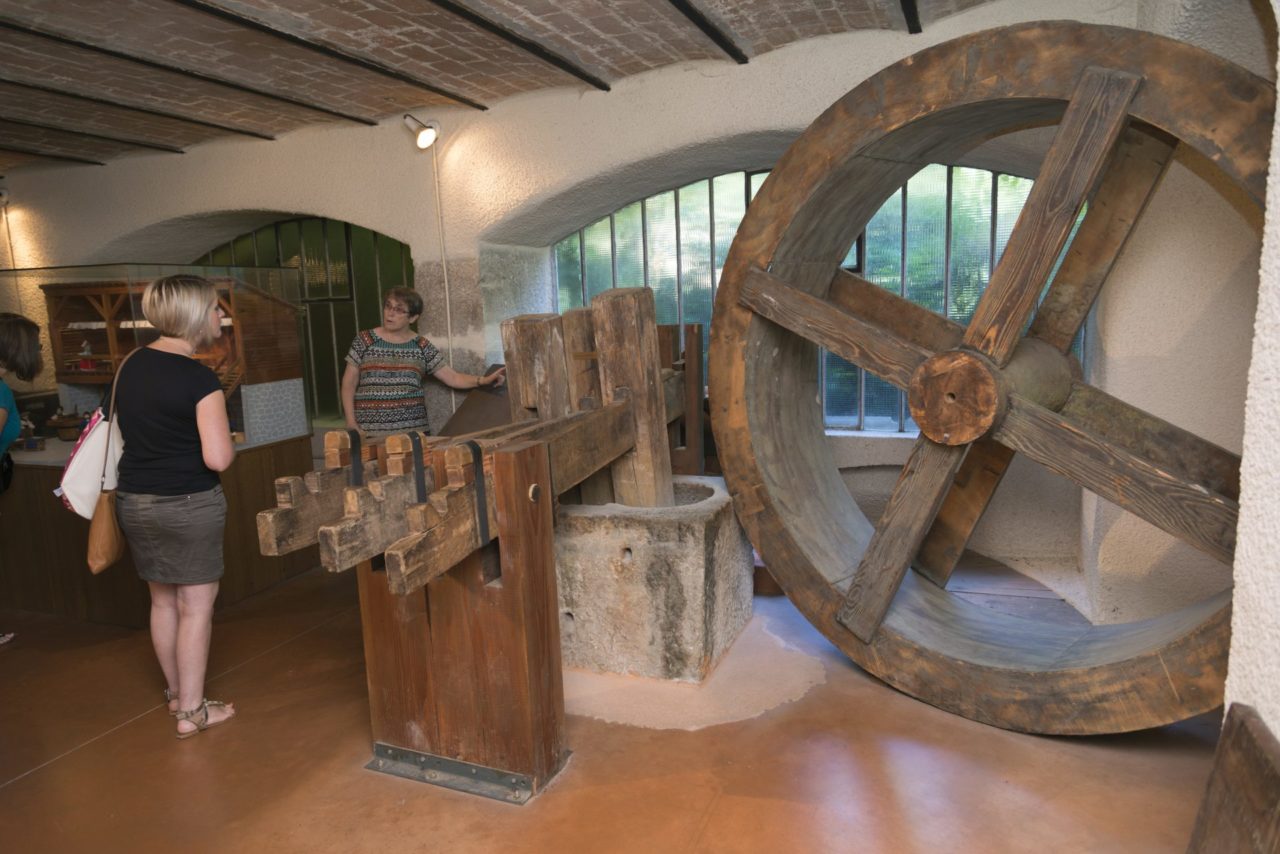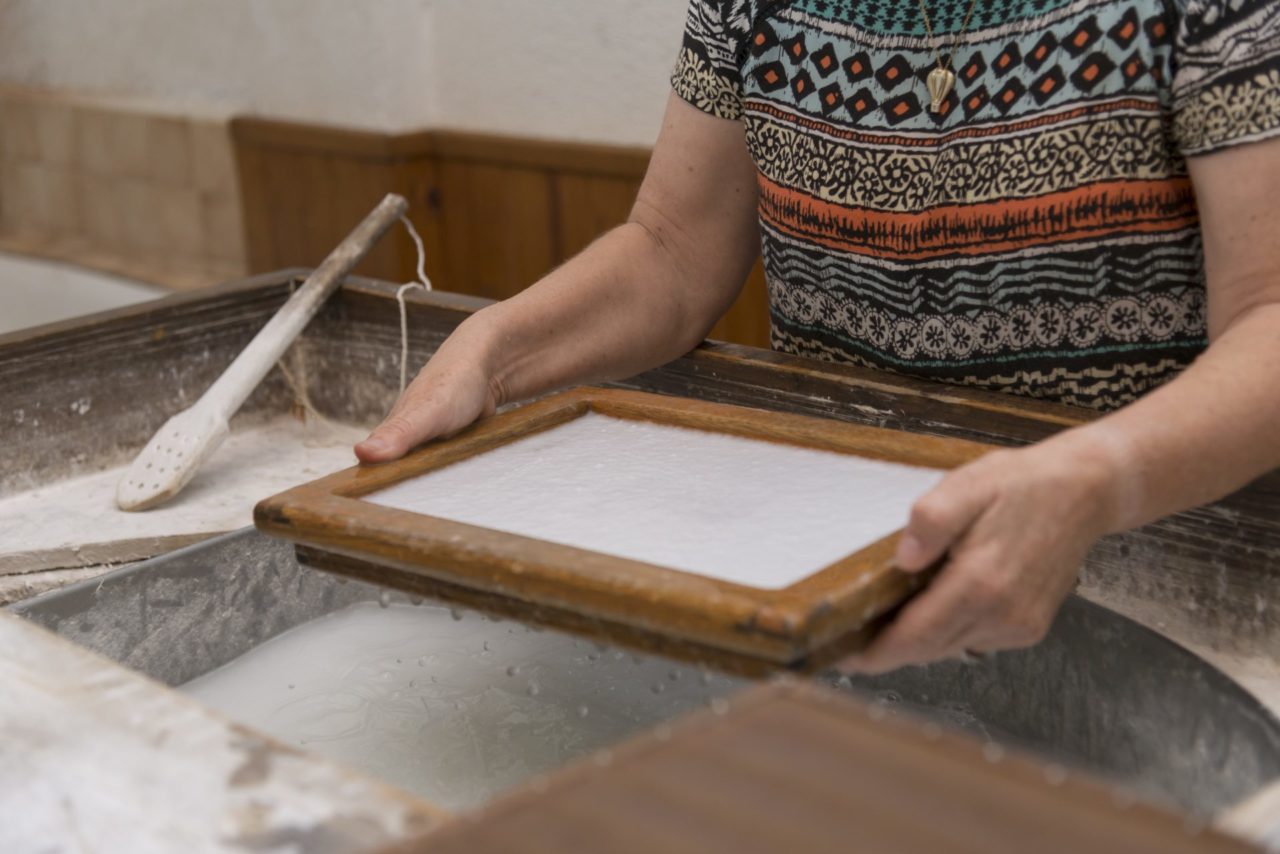Today head to the Canson and Montgolfier paper mills museum.
To access the Canson museum from Annonay, it is possible to arrive by car or by the Via Fluvia by bike or on foot. The museum is located in a green and peaceful setting with the Deûme river below.
In front of the museum, a century-old tree stands guard while a pretty house with a glass roof catches my eye. I will learn later that it is one of the three chapels of the stationery, awaiting restoration. In spring as in summer, here it is a perfect decor to relax, before or after the visit.
The start of the visit
Once the ticket in hand, I sit down in a video room to watch a ten-minute film on the history of Montgolfier and Canson paper mills. I learn why it is located in Vidalon, a stone's throw from Annonay, but I let you discover it for yourselves...
Through historical documents, objects and explanatory panels, the rich collection of the Canson museum reveals to me the whole history of the Montgolfier family.
 Lucia Ortega
Lucia OrtegaFollow the guide!
The time for the guided tour has come and I hurry to join the guide who is waiting for us one floor below. To give some historical landmarks, she briefly reviews the history Montgolfier brothers and Marc Seguin and their inventions.
We take the direction of the engine room. Before explaining the role of each, the guide shows us a model explaining each step papermaking : the recovery of rags, sorting, rotting, breaking down, triturating, the tank, coating, lifting, drying, gelatinization and even sorting!
Behind each step, small hands are at work. There is something to be impressed when you know that the factory housed hundreds of workers!
In turn, the guide puts the machines into action before our eyes and explains how they work. They are in very good condition and some are quite noisy! It will not surprise you, but at the time papermakers often ended up deaf.
Our guide reveals that even today, there are still many shirt buttons in the land of Vidalon or Boulieu-lès-Annonay. A good reason for that : at the time the sorters did not bother and threw the buttons of the rags directly into nature!
A little demo?
 Lucia Ortega
Lucia OrtegaThe moment I was most looking forward to: papermaking demonstration !
The guide plunges her sieve into the water, raises it and makes a few movements from right to left. These gestures are of paramount importance for to intertwine the fibers of the paper. Once dry, a watermark appears in transparency. It is in a way the logo of the Montgolfier family. Above, we note the presence of a crown. Indeed, the stationery had been recognized royal factory : a great recognition for the time, which ensured the company a reputation throughout the kingdom!
A paternalistic stationery

Like many factories at the time, the Montgolfier factory was thought of as a place to live. Three chapels, one of which is still present in the basement, served as a place of prayer for the workers.
The machines had to run 24 hours a day, everything was organized for live independently ! The advantage of this operation, for the managers, was to ensure a workforce over several generations. However, the workers knew how to make themselves heard: in the machine room, there is a section of wall with levers, some of which allowed the electricity to be controlled in the masters' houses. If the workers had any demands, then all they had to do was let them know by cutting off the power!
Why canson...
… and not Montgolfier?
During the inheritance by the Canson family, the stationery was called Montgolfier and Canson. It was by wanting to do business with English people that they only adopted the name Canson, which is easier to pronounce for our English-speaking friends.
Nevertheless, it will not have escaped observers that even today, the Canson logo is a hot air balloon. A nod to the Montgolfier brothers!


